

HMCS Ontario




|
In the spring of 1956 I was living in the town of Burns Lake, BC. I Had quit school the previous year in grade nine. My reasons for quitting school were multiple and genuine to me. My father was clear in his revelation that either I remain in school or I start supporting myself. I immediately found job prospects were limited. My work history dismal; I was fired from picking strawberries because I ate as many berries as I picked. In the fall of 1955 I took a job repairing Homelike power saws that only lasted a few months. I went logging as a limber for Thompson Forest Products during the winter lasted only three days; I spent most of my time standing over a fire trying to stay warm.
Early in the spring of 1956 I took off on a trip south by motorcycle with a friend that ended being arrested in Seattle, Washington by the police and kicked back to Canada and eventually back to Burns Lake, broke. Picture of me in jacket!!!! Then one day I saw a Canadian Navy recruiter in front of the Tweedsmuir Hotel. Curiosity drew me across the street. I spent the next hour listening to the recruiter's sales pitch about a career and pre-paid world travel. As he talked I realized it was my opportunity to get out of Burns Lake and be on my own. He provided a bunch of information sheets for me to take home and discuss with my father as he would be required to sign as his consent. Imagine how quickly my excitement was dashed when my father told me he would not sign! I met the next morning with the recruiter who advised he would be back in town in a week on his return trip from Prince Rupert. I had promised the navy recruiter that I would meet with him the following week to see if things had changed. Imagine my pleasant surprised when he told me that my father had been in earlier the morning and signed my enrollment forms! It was several years later that I learned that both Rev. Atkinson and the RCMP Sargent had talked with dad on my behalf. When I left the Petty Officer's room that afternoon I has signed away the next five years of my life. Around the middle of May 1956, a couple months after my sixteenth birthday, I received a letter from the navy containing railway tickets and expense money. I was to report to HMCS Chatham in Prince Rupert on 18 May 1956. On the morning of May 17th dad drove me to the railway station. This time I would ride in style, not in some empty box car. Staring out the window of the moving train all I could think of was starting a new life. It was an interesting ride; the train was full of immigrant families destined for Kitimat to help build the new aluminum smelter. The train cars were full of foreign languages. Strong unfamiliar smells permeated the air as the families had brought along their own foods. Yelling children ran up and down the isles. Later that day when we pulled out of Terrace on our way to Prince Rupert the train was virtually empty and the remainder of the trip was peaceful. |

HMCS Chatham - Prince Rupert BC HMCS Chatham, a naval reserve division, was established at 51 McBride St. in Prince Rupert. This unit housed the jetties and buildings which housed the command post and offices of the NOIC Prince Rupert (Commander A.H. Reid), the Naval Officer in Chief. The port war signal station (PWSS) was on East Kinahan Island on the Southern approaches to Prince Rupert. According to the Prince Rupert newspaper, at its peak, 1,500 sailors called HMCS Chatham home or sailed from its jetties. During WW II, HMCS Chatham was a full time naval division operating 24x7, even though it may have been commanded by a Cdr. RCNR (or RCNVR) - at least at the start. Following the war the land and buildings were sold to the Royal Canadian Legion #27 in Prince Rupert BC for $21,000. On arrival in Rupert I made my way to HMCS Chatham which was to be my home for awhile. I soon found myself in a structured daily routine. It was suggested I enjoy myself while I could as my world would end when I reached 'Cornwallis'. They were referring to HMCS Cornwallis, the navy's training base. I would soon find out what they meant. A few days later I boarded the train for trip east. That's when I realized that 'Cornwallis' was actually way back east in Nova Scotia. I had just assumed it was in BC. There was another recruit onboard from Prince Rupert and we picked up several more as we made our way east. It wasn't the first time I had crossed the country. Ten years earlier, following the death of my mother, Dad and I traveled from London, Ontario to Kelowna BC. I was now old enough to find interest in the trip and enjoy new experiences like the red light district of Montreal, a real eye opener! My first sea voyage would turn out to be the ferry crossing between St. Johns, New Brunswick and Digby, Nova Scotia. The only thing that comes to mind about that crossing was that I was terribly sea-sick, a great way to start navy life. |

HMCS Cornwallis - RCN Training Base in Nova Scotia along the Bay of Fundy. Commissioned in 1943 in Halifax to train recruits for the RCN for WW II it was later moved to its location on the shores of the Bay of Fundy. After the war, HMCS Cornwallis was declared surplus and closed down on 28 February 1946. Re-commissioned 01 May 1949 (as per Navy List Jan 1955), HMCS Cornwallis was again the recruit training centre for the RCN and later the Canadian Forces. In 1966 the base was re-named CFB Cornwallis. The based remained the main recruiting centre for the Canadian Forces until it was shut down in 1994 and training moved to St. Jean, Quebec. |

Iroquois XVII Division (May-Oct 1956) Left to Right: Sandercott, Pearson, Pollock, Wright, McKillop, Lineham, Makay, Turner, Field Menier, Walker,Stuart, Peck, Pringle, Okawa, Williy, Robinson Darling, Coles, Overbeke, Goldstone, Grenon, Ham, Jackson, Kelly Soucie, Macquor, Lanigan, Urban, Rose, Grady, Ellsworth, Cornish Macquaid, Jacobs, Glover, MacMullen, Mackenzie Magraw, Wilson, Fitzgerald, Lt. Bandy, Chief Magill, Watson, Shaw, Tulk |

HMCS Cornwallis - Training Base 
HMCS Cornwallis - Aerial View |
|
On the 28th of May I found myself in the clutches of basic training in the now dreaded 'Cornwallis'. So much happened so fast; civilian life was immediately replaced by military life. Orders flew fast and furious, medical exams, uniforms, dormitories and strict regimentation. By the time night rolled around that first day I was questioning why, what was I doing?? Day two started six months of purgatory.
Each day was the same routine; breakfast, clean the dorm, exercises, parade ground drills, marching, etc. Our drill instructor was unrelenting. Strangely, I found myself actually beginning to enjoy parts of the training such as being in uniform and the marching. Sports played a large part in our training. I had always been a fast runner over a long distance. In a scheduled run at the base I came in second. I also recall one day in the swimming pool when they were teaching us survival techniques in the water. They had us put on heavy duck canvas uniforms that were way too large and told us to jump in the pool and float. I knew how to tread water but the legs of the pants were too long and my legs got tangled. Before I knew it I was sinking to the bottom of the pool. I remember looking up at the surface as I sank farther down. Drowning is the strangest feeling. Next thing I knew I was at the surface and a lifeguard was dragging my butt to the pool side. That day I learned how to float and how to turn those long pants into a float device. One day they loaded all of us into a bus and took us for a trip to the Naval Air Base, Shearwater in Halifax. We got to ride in a big helicopter for an aerial view of the Halifax Naval Base. Then to give us a taste to life on a navy ship, we boarded the frigate HMCS Buckingham for a day on the water. I really enjoyed the experience, and no, I didn't get sea sick. |

H.M.C.S. Buckingham Laid down as HMCS Royalmount, she was renamed Buckingham on 05 April 1944. Commissioned on 02 November 1944, at Quebec City. She proceeded to the east coast and sailed from Halifax on 18 December 1944 for Bermuda to work up. She returned in mid-January 1945, and in February 1945 was assigned to EG 28, as a member of which she carried out escort and patrol duty out of Halifax until VE-Day. In May she arrived at Shelburne, escorting the surrendered U 889. In June 1945 she began a tropicalization refit at Liverpool, N.S., continuing it at Shelburne until 20 August 1945, when it was suspended. Buckingham was paid off on 16 Nov 1945 at Sydney and placed in reserve at Shelburne until 1946, when she was sold to Marine Industries Ltd. Re-acquired by the RCN, she was converted to a Prestonian class ocean escort, 1953-54, and re-commissioned for training purposes. |
|
One memory very near the end I would like to forget happened when I was on night watch duty at the base hospital. All we had to do was follow a set route around the hospital and check in at regular intervals, and stay awake. I forgot the last part when I stopped for a moment in an empty room full of beds. An hour or so later I awoke to a Petty Officer poking me with his night stick. I was placed on charges and sentenced to spend two weeks of nights in the shore patrol cells. I went through the passing out ceremonies with my division but had to finish out my evening punishment before I could leave 'Cornwallis'.
During my final week in Cornwallis my daily duties were varied. Ironically, I was assigned as a prisoner escort. Along with a Petty Officer from the Shore Patrol we escorted a prisoner from Cornwallis into the hands of the Black Watch Detention Barracks. Don't remember where but it took a couple days all told. That was one scary place! Finally on the 28th October 1956 I put HMCS Cornwallis behind me and hit the road for the west coast. First stop would be Burns Lake for two weeks leave and then to Victoria and HMCS Naden, the west coast shore base. |

Final Inspection. 
A little sightseeing after leaving Cornwallis. 
A little celebrating before getting on the ferry to St Johns. |

Heading back to the West Coast The trip back across Canada by CN Rail took several days. By the time I reached Jasper, Alberta, where I switched trains to continue west to Burns Lake, I was flat broke. I still had meal vouchers so I didn't starve but I was picking through ashtrays for something to smoke. My leave was probably a couple weeks, most of which I spent in uniform to separate myself from those I left behind. I don't recall much else. |

HMCS Naden - Western Shore Base The Naval shore facility at Esquimalt was commissioned as HMCS Naden on September 3, 1922. It was named for facility's Depot Ship, HMCS Naden, a small wooden schooner built in 1913 that previously had been used for coastal surveys and cadet training. During the Second World War, Naden became the primary Naval Training Centre for Western Canada. When CFB Esquimalt came into being on 1 Apr 1966, HMCS Naden became part of the base. On my arrival in Esquimalt BC I reported to HMCS Naden. It was much like Cornwallis except for all the training stuff. As I recall there were four or six bunks per room and a locker each. I was interviewed by the base psychologist who suggested I attend night school to upgrade my education. I took her advice as long as I was there. I was transferred to my first ship, the frigate HMCS Ste Therese on 29 October 1956. I was transferred back to HMCS Naden on 26 July 1957 for further training. At some point I was assigned to Parade Duty for Royal Visit. 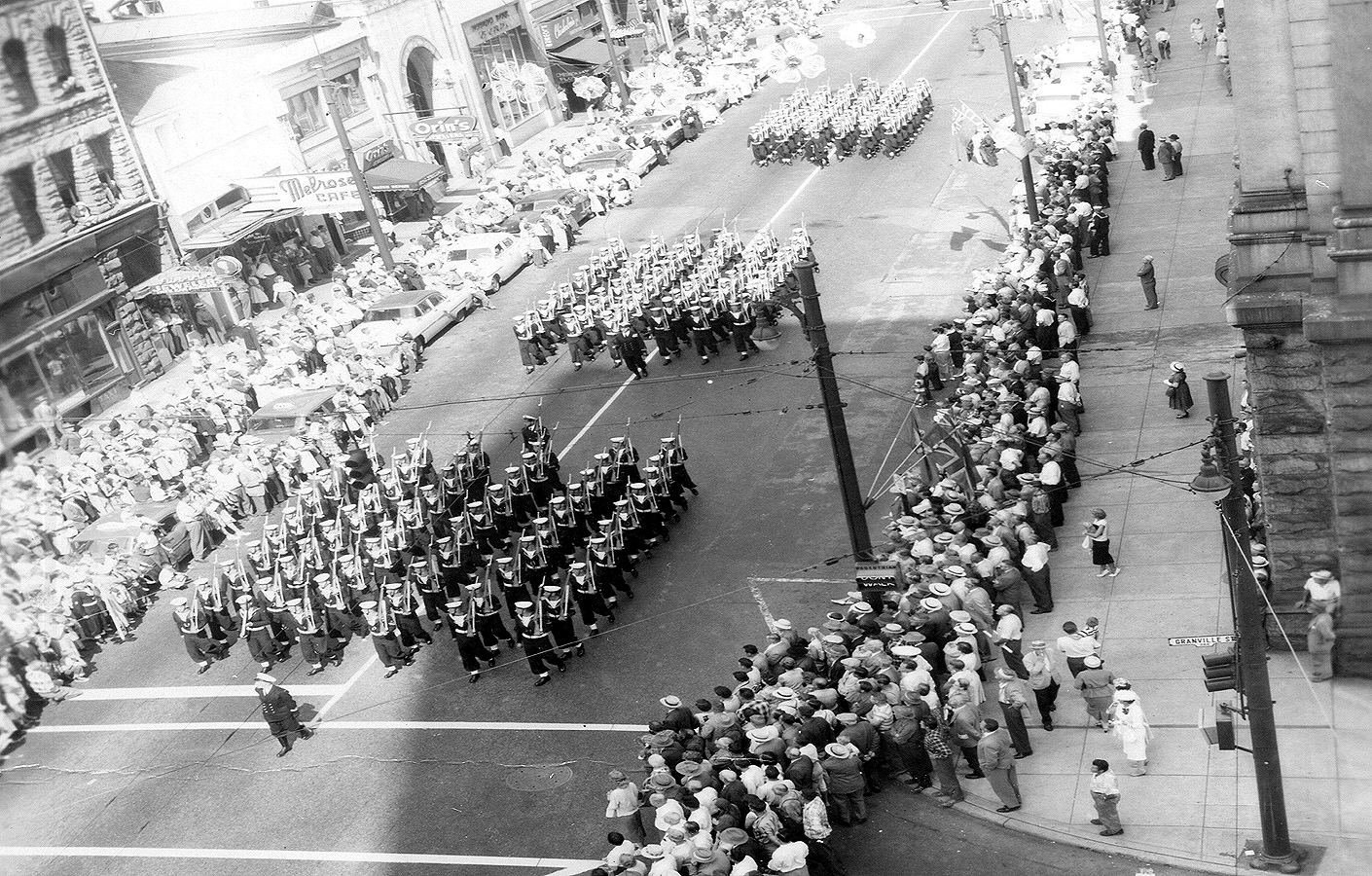
Royal Visit Parade 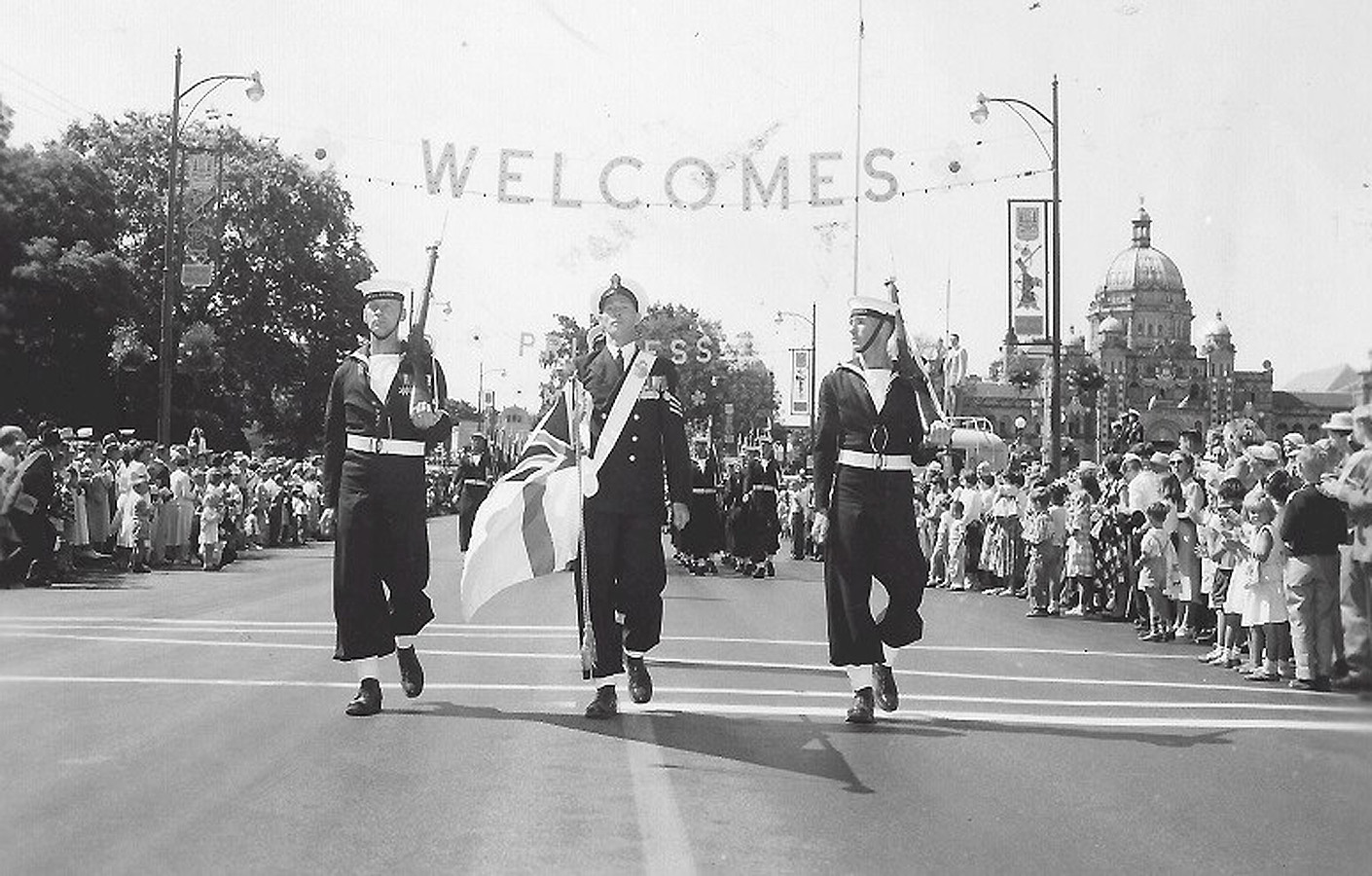
Royal Visit Parade 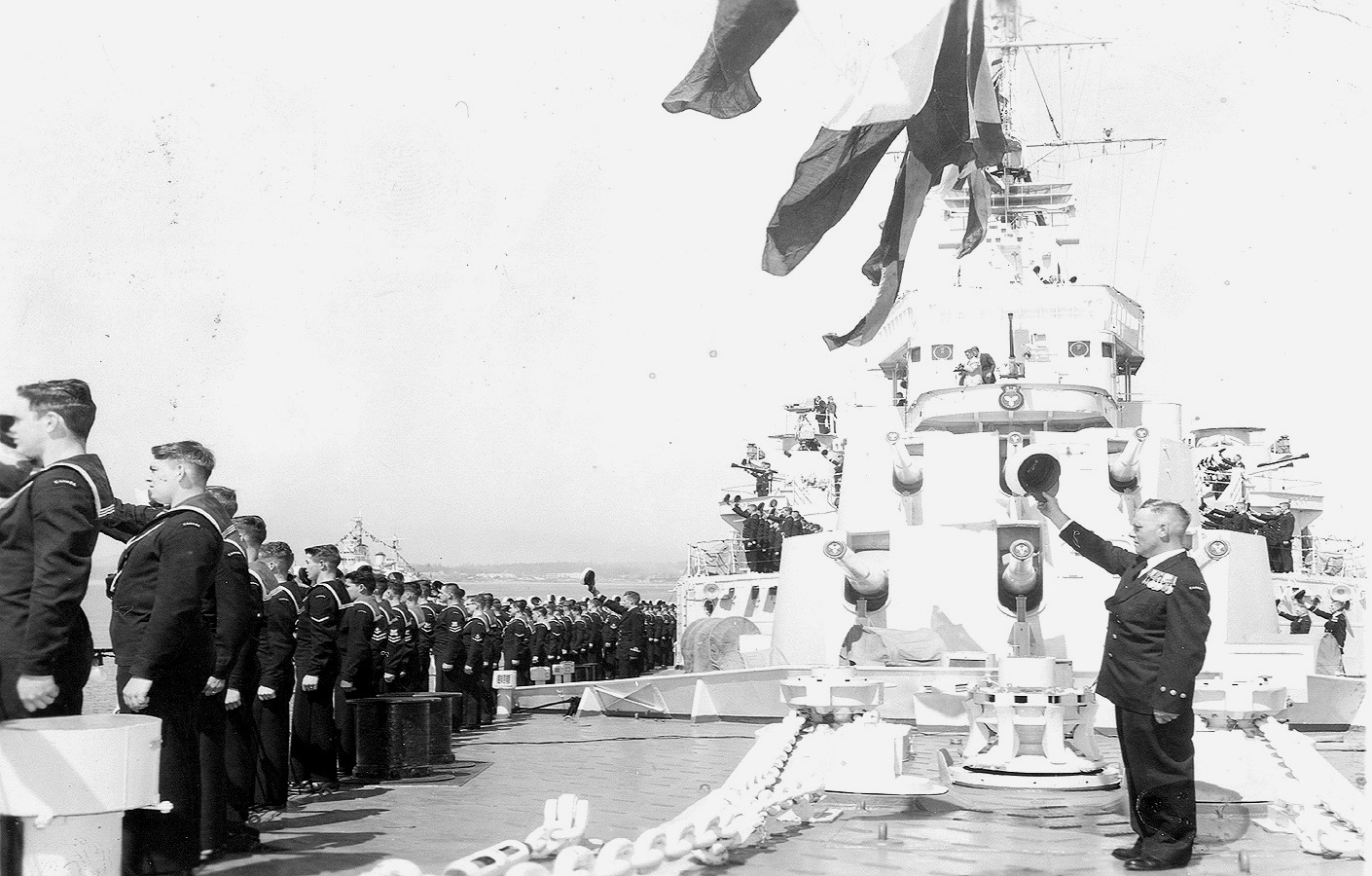
Royal Salute from HMCS Ontario. 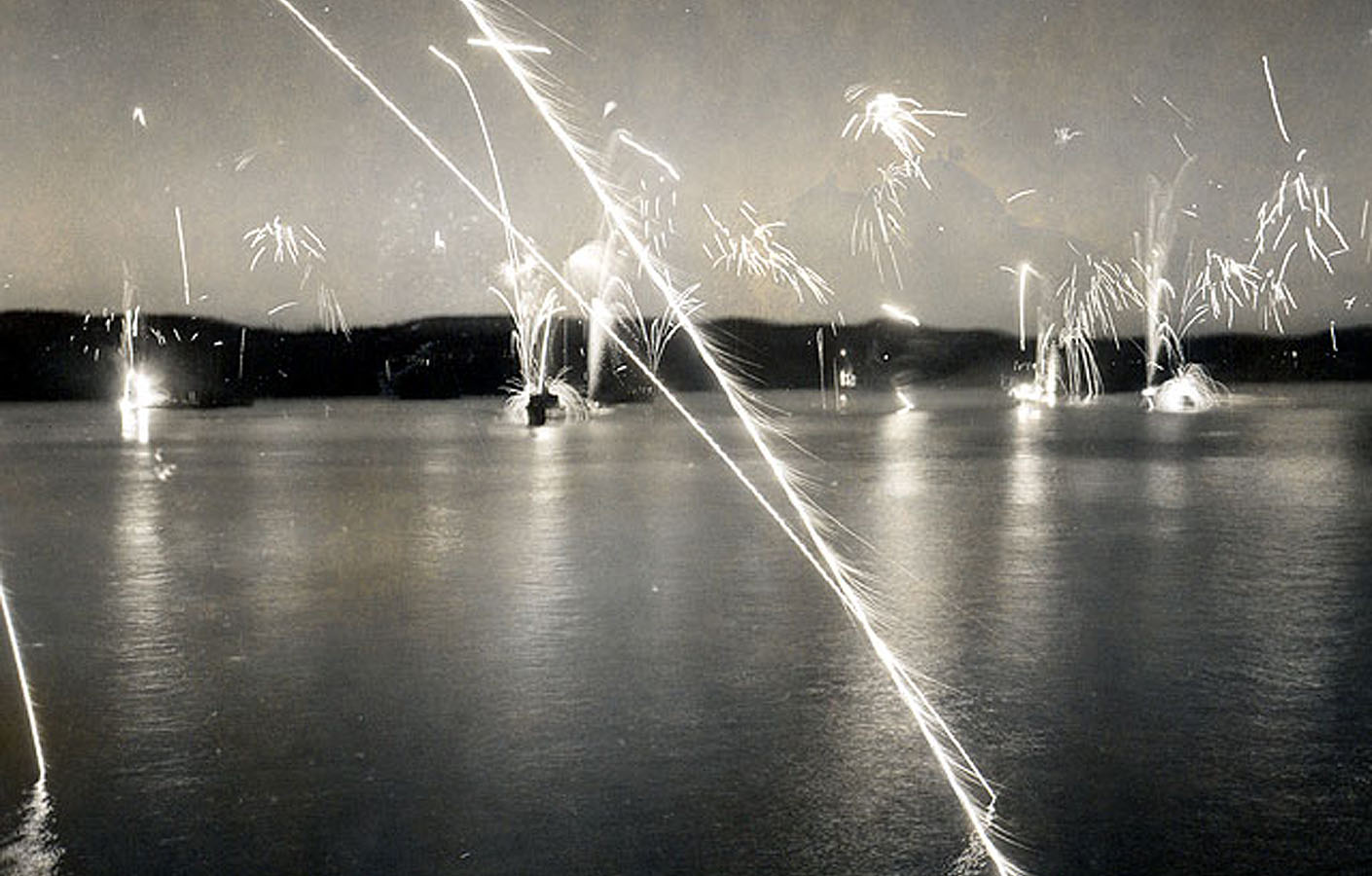
Fireworks display in Vancouver's English Bay. Another fill-in assignment was in the base psychologist's office doing clerical work, my reward for mentioning I knew how to type during an interview. We talked a lot about my life prior to the navy. Through her I began to understand what I had gone through following my mother's death when I was only five and dad starting a new family with another woman. Her explanations of what I had gone through and why had a profound effect on me, and for the most part I was able to move on with my life. Also, while in Naden I returned to night school and managed to finish my grades nine and ten levels. In August of the year I completed training and was promoted to the rank of ABEM1. In November of 1957 I was transferred to HMCS Ontario. Following the de-commissioning of HMCS Ontario I returned to Naden on 15 October 1958 and remained there until being transferred to HMCS Jonquiere on 26 November 1958. I was back in Naden in May of 1959 for a few weeks and again in the spring of 1960 for training courses in managing an Engineer's Office. |

HMCS Ste Therese - River (Prestonian) class Frigate Built by Davie Shipbuilding, she was commissioned in May 1944, at Levis, Quebec. She arrived at Halifax early in July 1944 and, after preliminary workups she proceeded to Bermuda to complete the process. Returning in mid-August 1944, Ste. Therese left Halifax in late October 1944 to join convoy HX.317 for passage to Londonderry. There she joined EG 25 and served with it in U.K. waters until February 1945, when she was re-assigned to EG 28, Halifax. She served locally with EG 28 until the end of the war, and in November 1945 was paid off at Sydney and placed in reserve at Shelburne. She re-commissioned in 1955, after conversion to a Prestonian class ocean escort. Finally being paid off at Esquimalt in January 1967. She was broken up in Japan that year. On the Ste Therese I learned what it was to be a stoker, lots of menial duties before being promoted to OSEM1 and assigned to Boiler Room duties. It was eerie as hell, down through two pressure doors and down a long steel ladder into a deep dungeon in the belly of the ship. It was hot as hell and my job, as best as I can remember, was to scrape carbon build up from the burning oil that created the steam to drive the two large engines. The trick was to keep the fires burning clean & efficient. The only other person down in the pit was a Petty Officer. There were a lot of other menial chores we had to do. The food was generally good. There was a canteen to buy cigarettes and junk food. The engineering crew had our own mess deck with bunks, lockers, etc. Lower ranks shared washroom facilities. Officers and Petty Officers had their own quarters. We worked watches while at sea and day shifts in harbour. We had shore leave while in ports. While on the Ste Therese we had stops in San Francisco, San Diego and Pearl Harbor, Hawaii among others. At one stop over in Acapulco, Mexico, I stopped at a bar along the beach for a drink. Turned out the bar owner was a retired NCR Railway Engineer who spent a lot of time in Endako BC, not far from my home town. When he found out where I was from, my drinks and a meal were free. I think it was on this ship that we made a cruise to Panama and through the Panama Canal into the Caribbean. One of the ports of call was Cartegena, Columbia. I recall buying a small stuffed alligator that I got all the way back to Victoria before losing it. Back on the Pacific side we visited the port of Balboa, Panama. There was some sort of revolution or something going on. We got caught up in the middle of it when military troops were suddenly running up and down the streets in the back of open trucks. There was some gunfire so we had to stay in the bars for protection, at least that's what we reported when we got back to our ship. That summer in 1957 I transferred back to HMCS Naden on training courses. 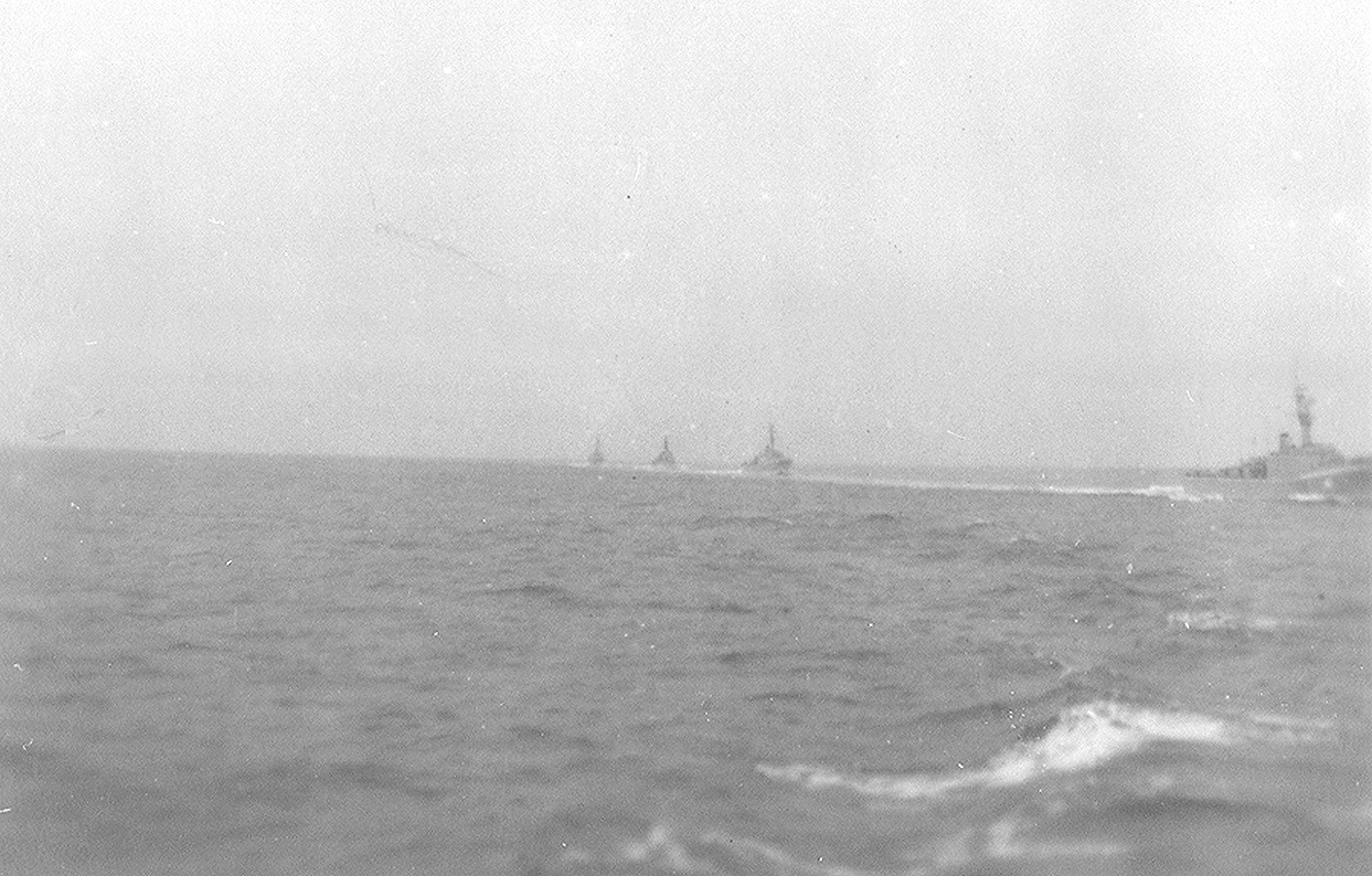
Convoy duty 
4" twin gun mount. 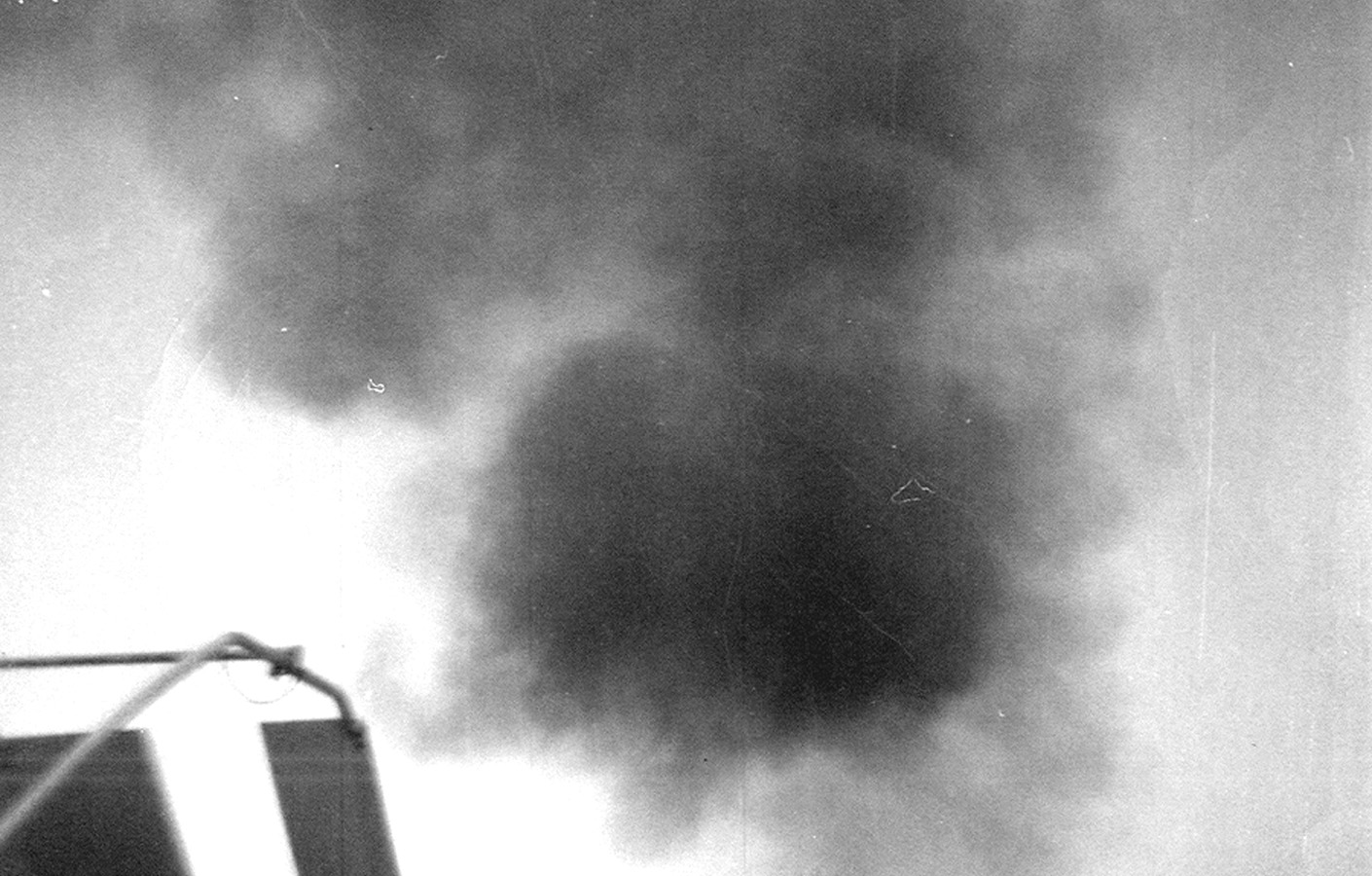
Cordite smoke from 4" guns 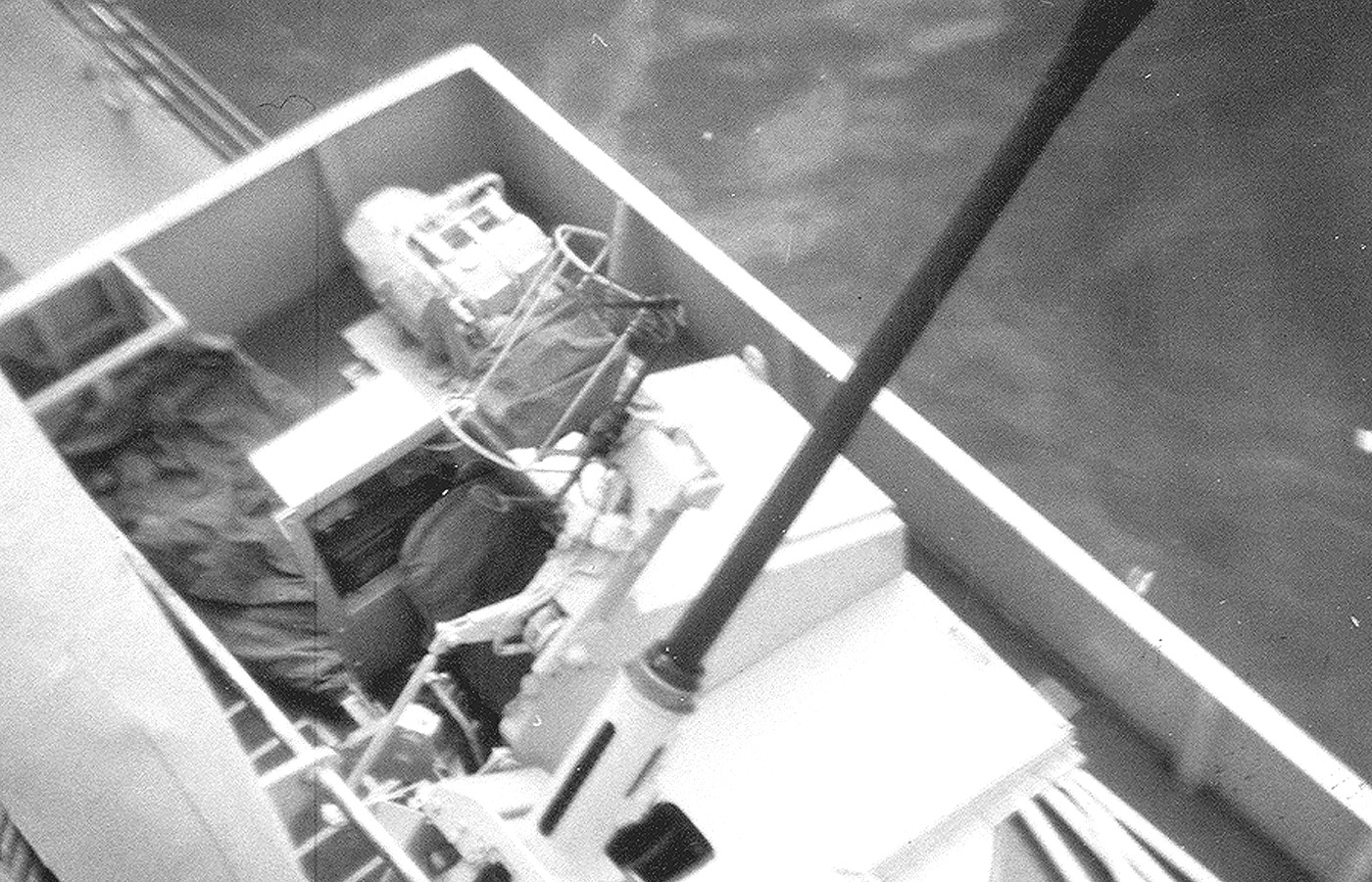
40 mm Bofor Guns 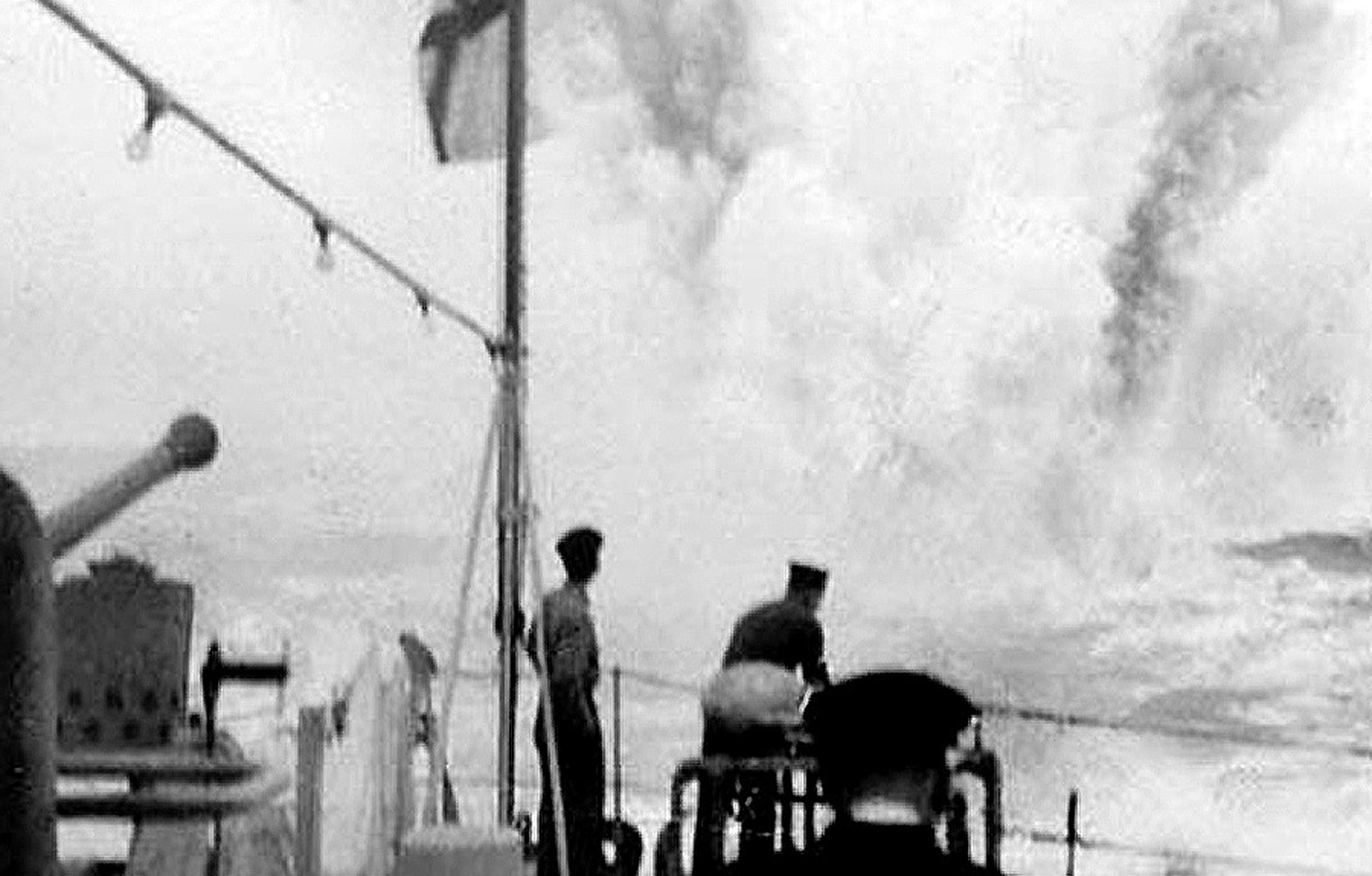
Depth Charges exploding behind ship 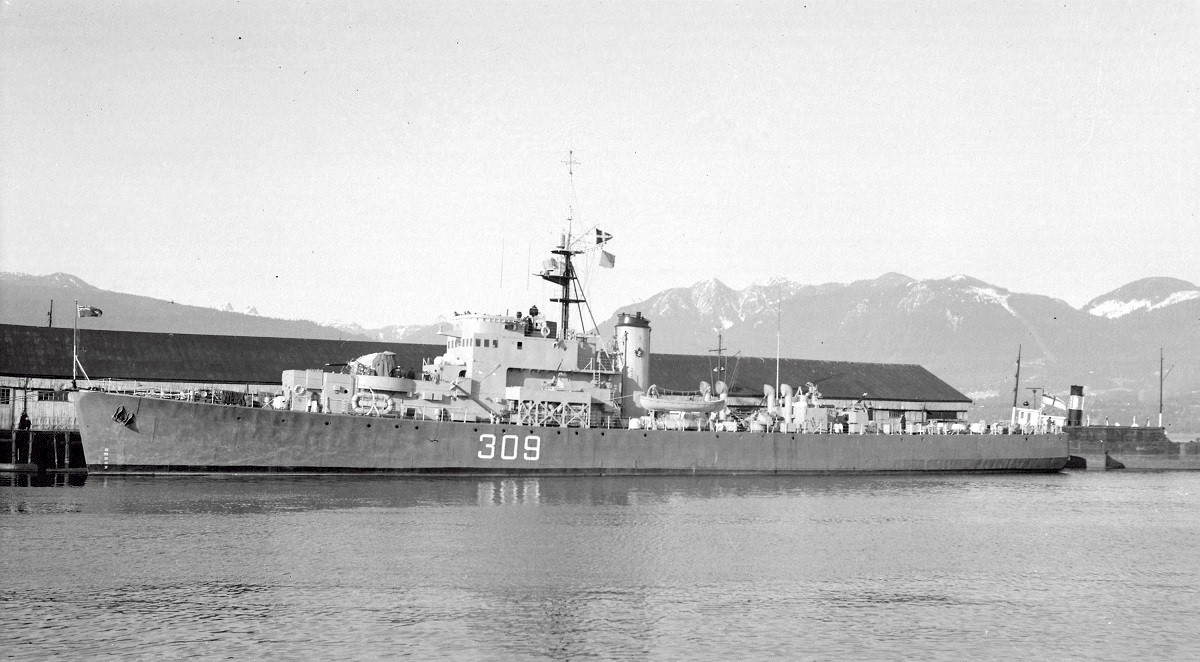
Ste Therese in Vancouver 1956. 
HMCS Ontario - Minotaur class Light Cruiser First commissioned 25 May 1945 as HMS Minotaur, acquired by the RCN and commissioned as HMCS Ontario. She was completed on 25 May 1945, and after trials, left for the Pacific via the Mediterranean and the Suez Canal. Ontario joined the 4th Cruiser Squadron, British Pacific Fleet. She departed on a four-month cruise of Europe. Late that year she departed Esquimalt for a 2-month summer cruise along the coasts of North and South America, going as far south as Ecuador. She returned to port on 10 August after meeting up with the Second Canadian Escort Squadron. In the spring of 1958 she departed for a two month Pacific Rim cruise stopping at Pearl Harbour, Suva Fiji, Auckland , Sydney, Suva, Yokohama, Midway & Honolulu. Ontario was paid off on 15 October 1958. The ship was sold to a west coast firm which began but did not finish the job of breaking up the ship at Vancouver. The ship was resold, along with HMCS Quebec to Mitsui and Co. of Japan. She arrived at Osaka for breaking up on 19 November 1960. I was transferred to HMCS Ontario in November of 1957. It was a huge change from Ste Therese with a crew of over a thousand. Routines took a lot to get used to. The memorable portion of my time on the Ontario started in the spring of 1958 with a training cruise to the South Pacific. First stop Pearl Harbor and then crossed the equator on the 12 of March 1958. Suva Fiji was next. Recall its docks piled high with coconut shells. My experience with the traditional drink Cava sent me for a hallucinating loop ending with a bunch of us being escorted back to the ship by Suva Police dressed in white sarongs. My shore leave privileges were promptly canceled for the next two ports of call. Then we stopped at a group of islands where the natives rowed out in canoes wanting to trade and sell all sorts of things. I was broke from Fiji. We remained at anchor over night and one of our crew members apparently got himself married. Our Captain had to do negotiating to get the local marriage annulled. Then came Auckland, New Zealand. Being as how my shore leave was still canceled I volunteered for Shore Patrol. So I still managed to spend at lot of time in and about the city. We operated with the New Zealand Navy Shore Patrol so we had transportation and they showed us all the sights. Then off to Sydney, Australia for a week in April. Somehow I managed to keep myself out of trouble there. Took a couple commercial sight seeing trips. I recall being on Shore Patrol duty but don't recall any problems. Then we were north bound, a couple stops I don't recall where before we docked at Hong Kong, China. Don't recall much there either; taxis drove us to dingy bars where we stayed until our money ran out. Next stop Yokohama, Japan. Most of us were broke so we reverted to the next best; Brass. A couple brass fire hose nozzles were like gold. Just so I wouldn't return home empty handed I piked up a set of hand made dishes that I still have today. From there we headed back across the Pacific stopping at Pearl Harbour and then back to home port Esquimalt. The Ontario didn't travel far that summer other than to Vancouver. Following the de-commissioning of HMCS Ontario I transferred to HMCS Naden on 15 October 1958 and remained there until being transferred to HMCS Jonquiere on 26 November 1958.

HMCS Jonquiere - River (Prestonian) class Frigate Commissioned at Quebec City on 10 May 1944, she arrived at Halifax on 05 Jun 1944 and proceeded from there to Bermuda to work up. Returning in Aug 1944, Jonquiere was assigned to EG C-2 and after three Atlantic crossings was transferred to EG 26 at Londonderry. She was also based from time to time at Portsmouth and Plymouth, remaining in U.K. waters on A/S patrol until 27 May 1945, when she sailed with ON.305, the last westbound convoy. She was paid off 04 Dec 1945 at Shelburne and later taken to Luzon for conversion to a Prestonian class ocean escort, re-commissioning 20 Sep 1954. Paid off on 12 Sep 1966, she was purchased by Capital Iron and Metal, Victoria, BC IN 1967 to be broken up. Shortly after purchased the price of scrap metal plummeted and she was not broken up until late 1971 or early 1972. I transferred to HMCS Jonquiere on 26 November 1958. My original duties on the ship started out in the boiler room and later working with the steam reciprocation engines. One of my jobs was to carefully reach down along side the webs of the crankshaft while it was turning and drag my hand flat along the web to check the temperature. A mixture of emulsified oil and water was used to lubricate the crankshaft. It was tricky and dangerous work; one mistake and one could lose an arm or even be dragged into the works and be killed. Later I was trained and received my ticket for axillary equipment. Then my duties included the main freshwater evaporators and refrigeration units. We made several cruises over the time I was onboard, to US Ports, Mexico, Pearl Harbor and BC Coastal patrols all the way up to Adak, Alaska. In Santa Barbara I applied for Shore Patrol duty with local law enforcement. We would ride around with police officers in their patrol cars and help out when ever one or more of our sailors got into trouble ashore. I really enjoyed the role. Once in Acapulco, Mexico I was again on shore patrol duty. That was a real eye opener; local police had to supply their own uniforms and weapons depending on what they could afford. They had a couple WWII rusty jeeps that barely ran, one without a muffler. I never did see the cell block which appeared to be down some back steps in the direction of screaming and moaning. At some point I took up clearance diving, complete with wet suit and all the required scuba gear. One memorable dive was on Midway Island in it's crystal clear waters. That was the first and only time I came face to face with a shark. Pretty un-nerving. It was during that period that I wrote my first book. It was a guide to Scuba Diving. In the spring of 1961 I turned 21 which entitled me to daily rum rations. Years previous I had used forged ID to get into bars, etc. I recall a Serviceman's Club where there were lockers and showers. That allowed us to change into civilian clothes while ashore. I later lived ashore most of the time in several different apartments. I bought my first car from one of my landlords; a 1953 ford coupe that had seen better days. I never got around to getting my driver's licence until the spring of 1961. I decided I needed an upgrade in my transportation so in the spring of 1961 I traded in the old ford for a sleek 1956 Meteor. That's when I needed to get my driver's licence so I could get insurance. Following training ashore for Engineer's Writer in the spring of 1960, I was assigned to the Engineer's Office with duties that included the clerical operations such as record keeping of engine room movements and maintaining the maintenance records for all equipment on board ship. I remained in that position until leaving the ship prior to my release from the navy in March of 1961. |
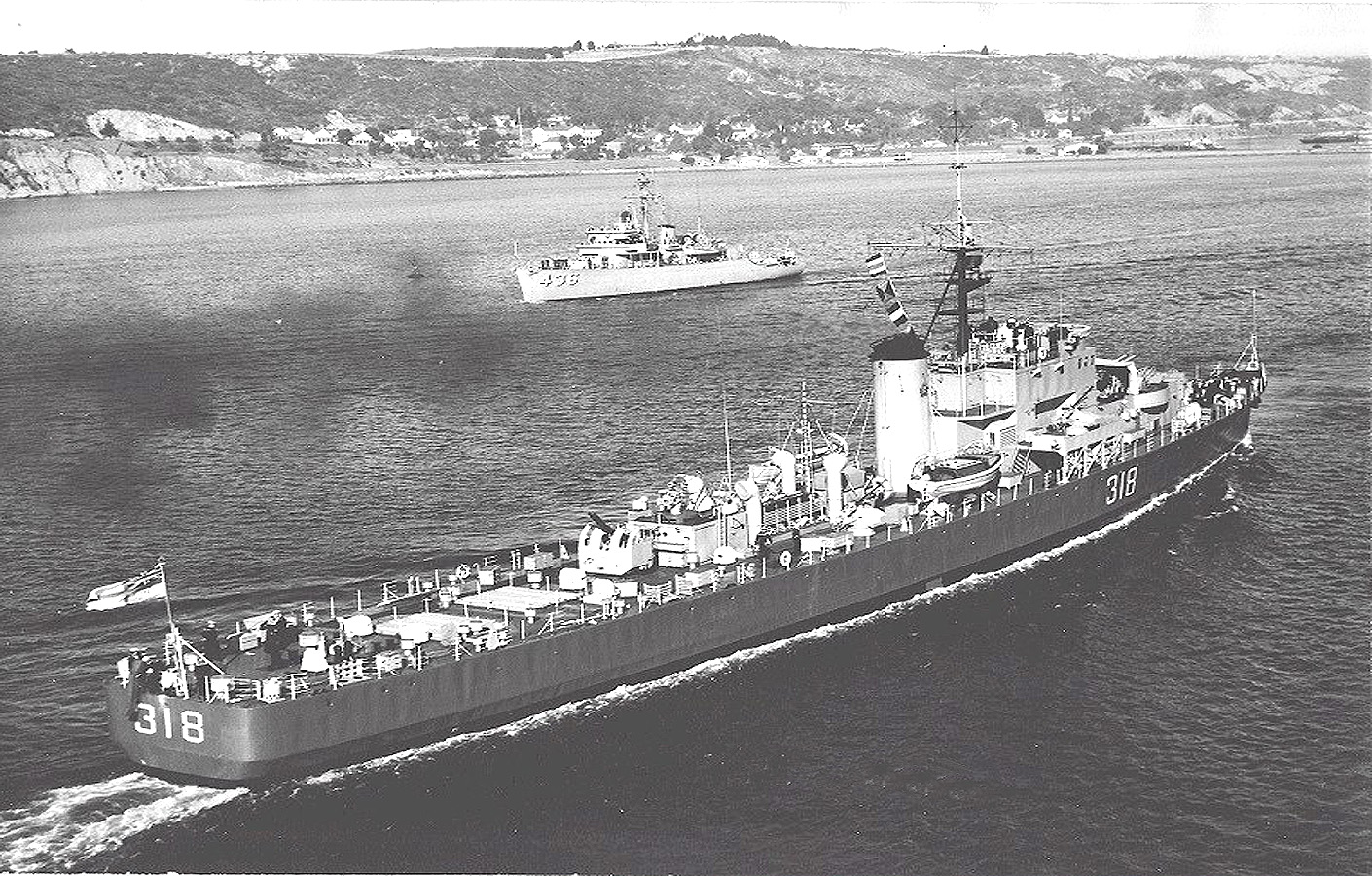
Jonquiere entering San Diego harbour.. 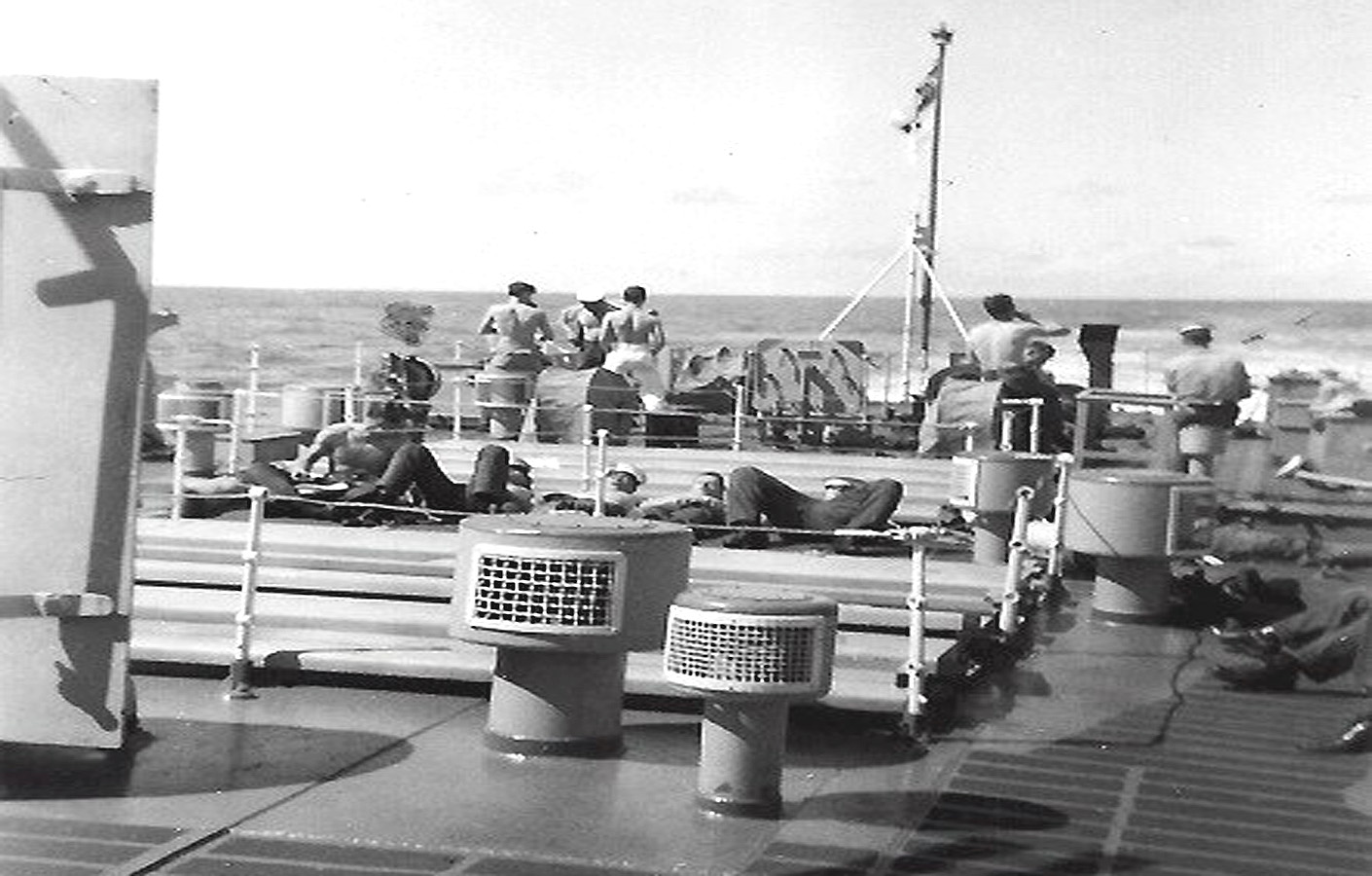
Jonquiere quarterdeck. 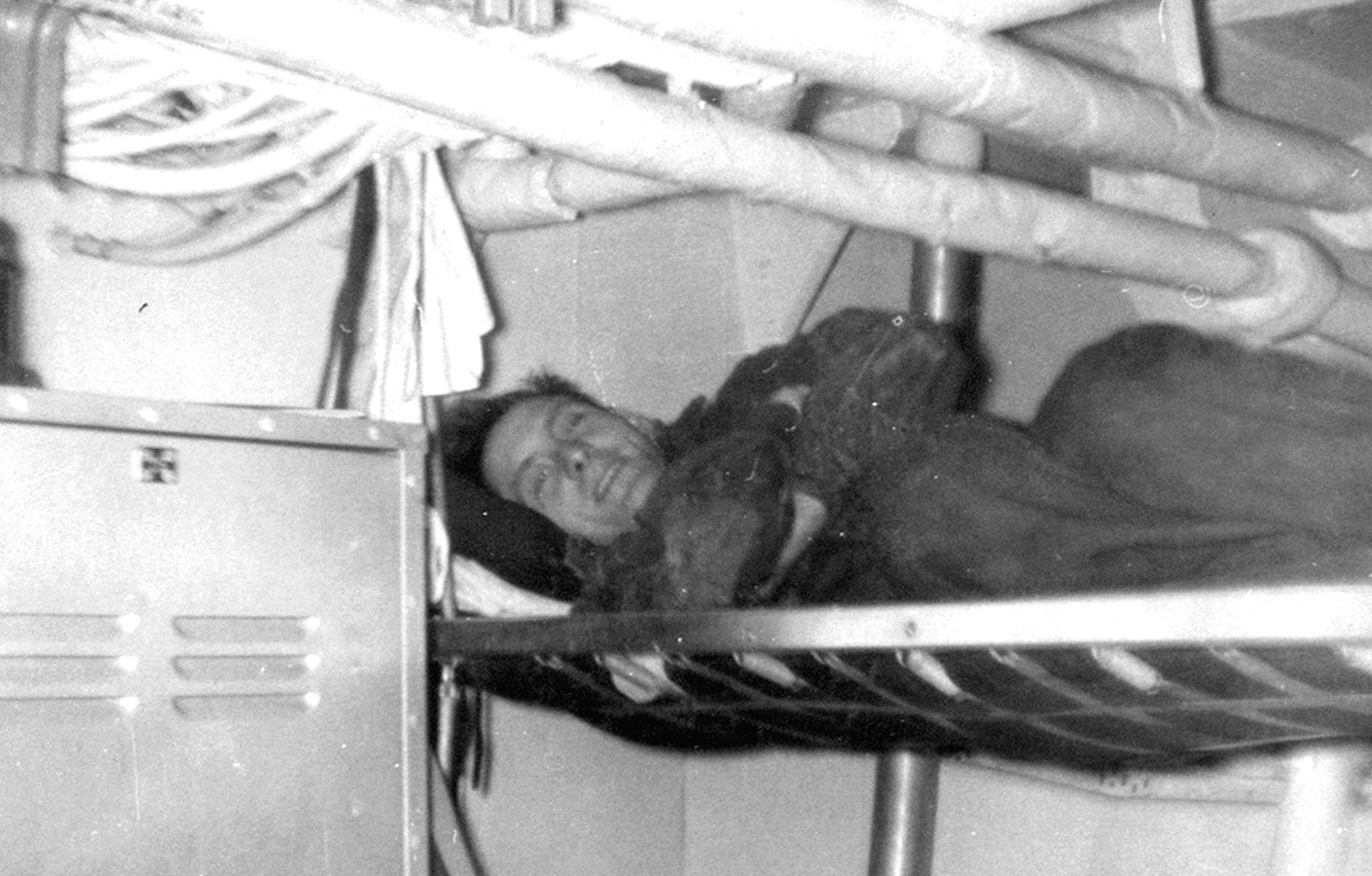
At least the Joinquiere had bunks. 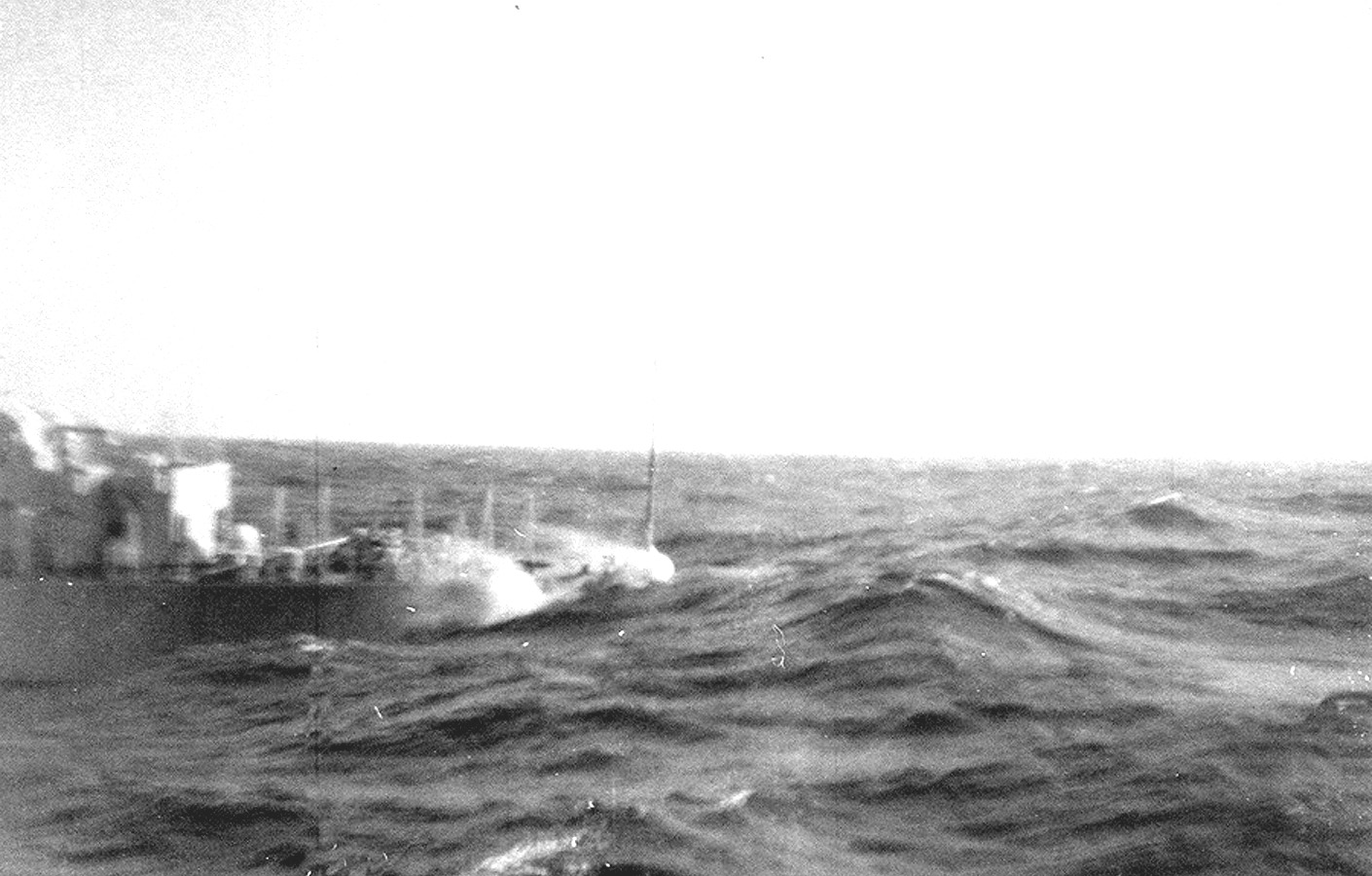
Sometimes played submarine. 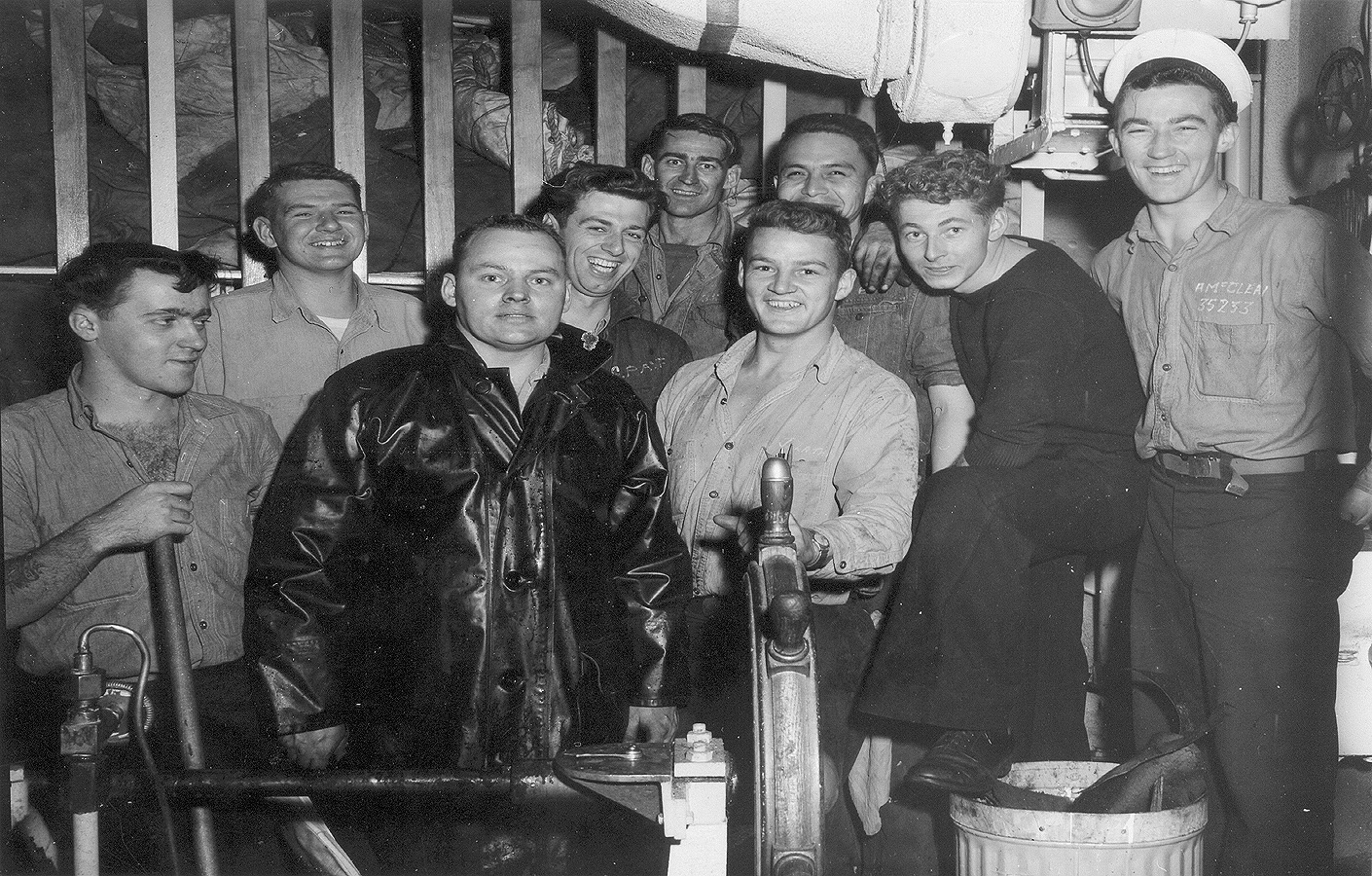
Following a serious onboard fire. 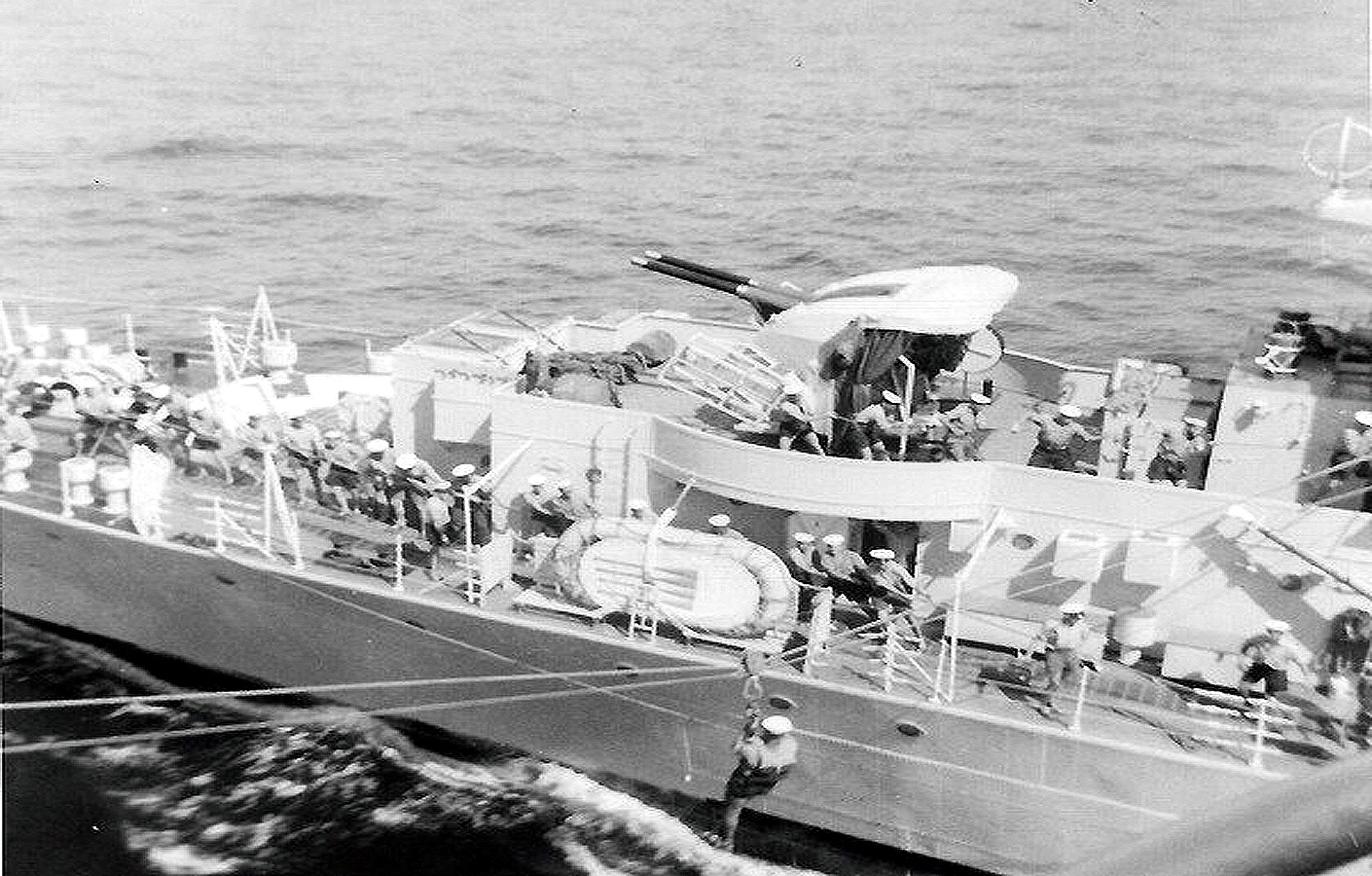
Injured crew member transfer from the Jonquiere to HMCS Ontario. 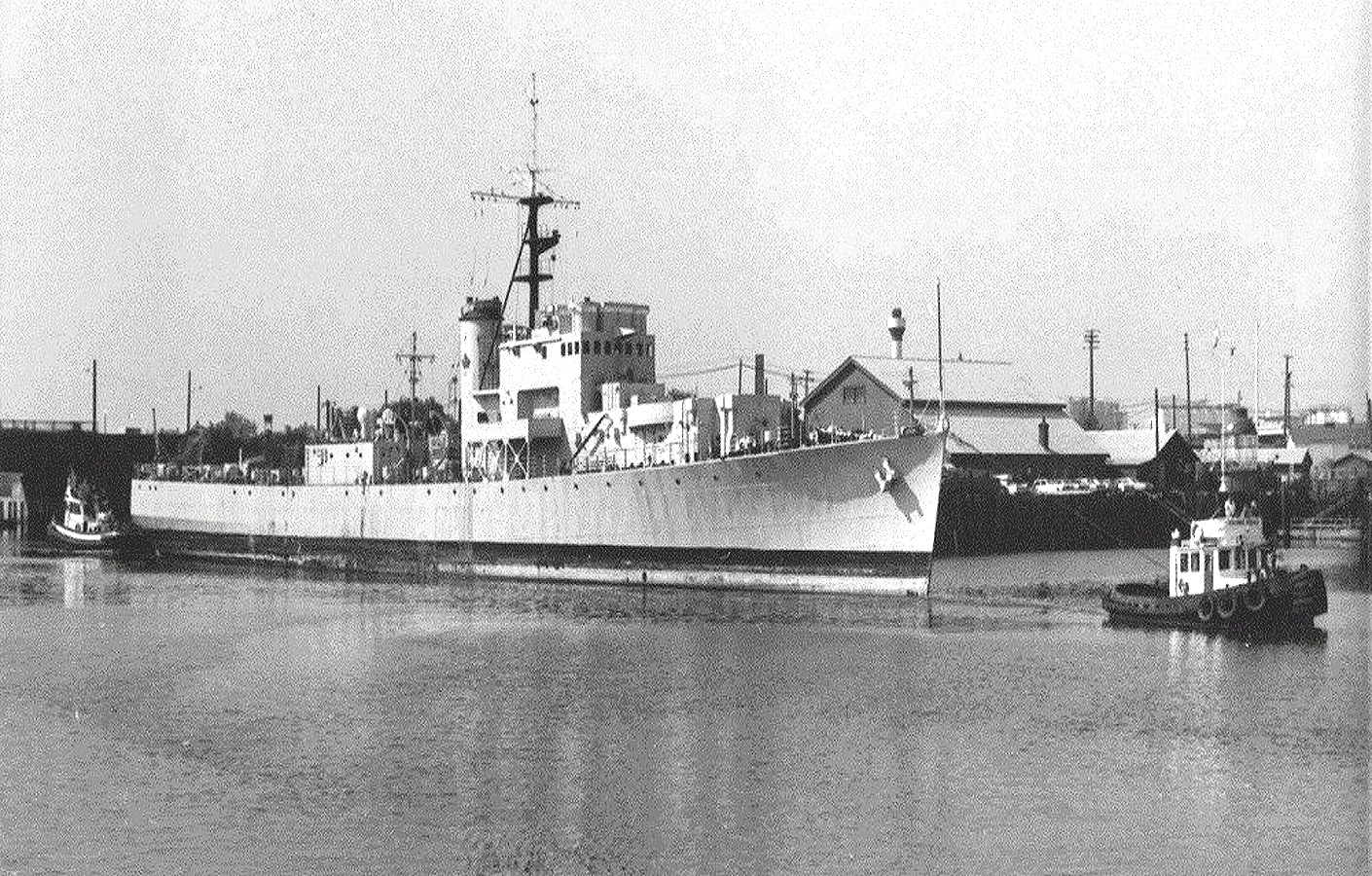
De-commissioned, stripped and heading for the scrap yard. |

My final transfer to HMCS Naden was on 3 March 1961 to await release. On 17 May 1961 I was Honourably Released from the Royal Canadian Navy and couldn't get out the gate fast enough. On the 18th May 1961 I made my last sea voyage aboard a BC Ferry from Victoria to Vancouver BC |
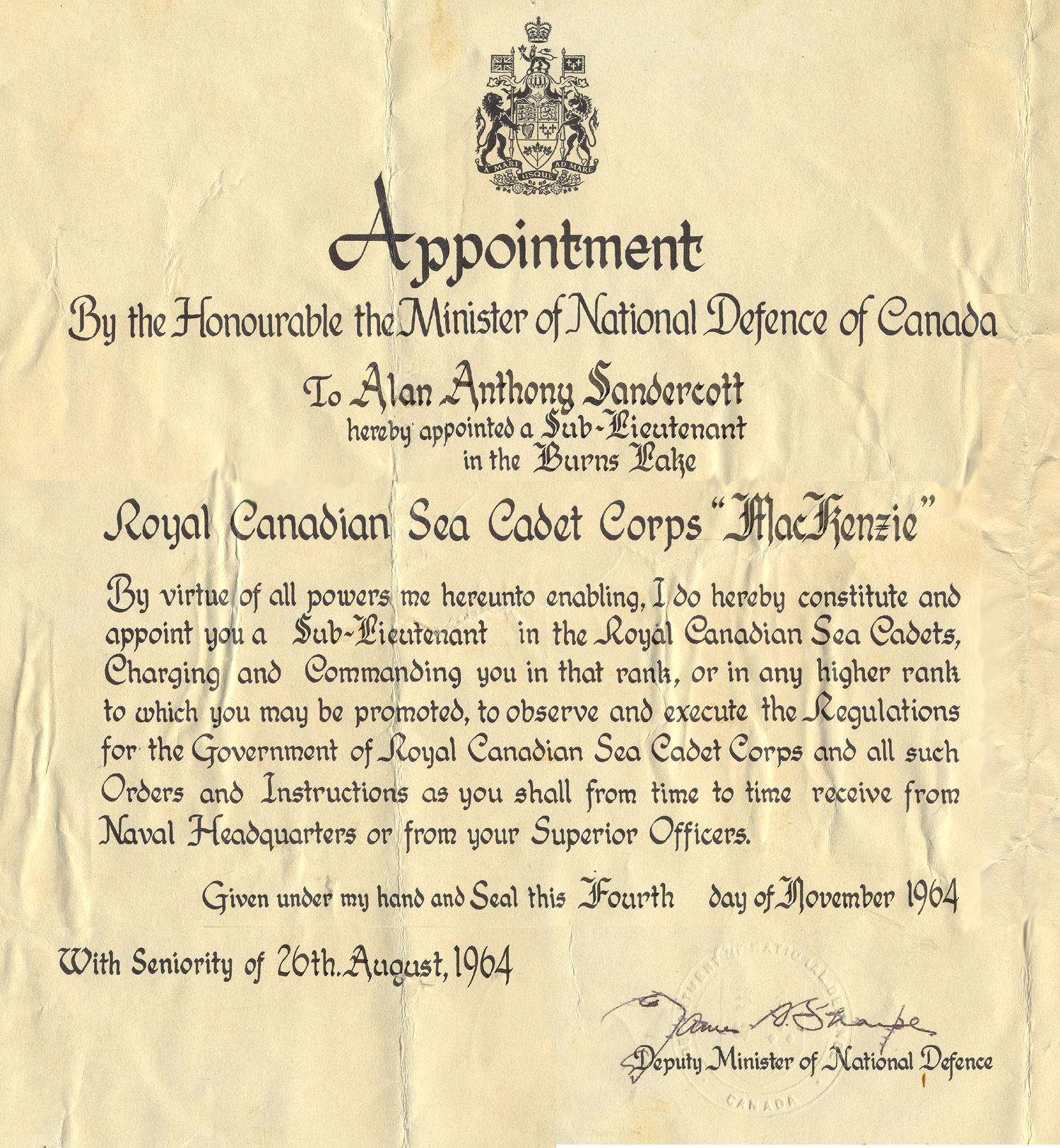
In August of 1964 I accepted an offer from Mr. Ralph Vipond, editor of the local newspaper, to form a Sea Cadent Corps in Burns Lake. Mr. Charles Stevenson joined our efforts. Royal Canadian Sea Cadet Corps "McKenzie" was formed and ran successfully for many years. Ralph was appointed Captain of the Corps, Charlie and myself were appointed Sub Lieutenants. Within weeks we were accepting applicants. Equipment, including uniforms and .303 Lee Enfield rifles (de-activated) arrived which I stored at my home. A couple years later I placed a bid on some band instruments for the Corps and we were successful. A boat acquisition would follow a few years later. Charlie Stevenson assumed command of the sea cadets after Ralph and I left Burns Lake. |






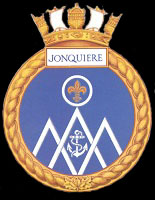


|
Website Design & Maintenance by Alan A sandercott Copyright 2014-2020 Alan A Sandercott |